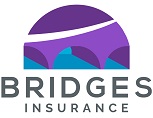How to Prepare Your Business for Winter
December 1, 2022
Political and economic turmoil may be a talked-about threat this winter, but cold snaps could be just as big a foe.
Businesses often overlook the business continuity issues potentially accompanying burst pipes, accumulations of snow on their roof and escapes of water. Taking all necessary steps to prevent problems before they arise and having a plan in place for if they still do, makes sense.
The same measures you would take at home, apply in business premises. Keep heating serviced, maintain the heat at a temperature of around 4°C, use insulating materials to keep pipework protected and know where all stopcocks are located, so you can turn the water supply off quickly, if you suffer a burst pipe or leak.
Trying to save on heating bills, by switching off the heating overnight or in an unoccupied building, could be false economy if it leads to a pipe burst. Prevent cold air from entering buildings, by checking areas around doors, windows and skylights.
Sprinkler systems must also be up to the job in winter. Those protecting external facilities, or colder areas, are particularly at risk and will benefit from you keeping the heating on. You can also add approved heat tracing, to at-risk protective system piping. Test any low-temperature alarm systems and ensure they work.
Don’t let taps or overflow pipes continue to drip – that can easily lead to a burst pipe in a cold snap. Keep drains and gutters clear, so water does not build up externally and use salt around drains, to prevent ice build-up. If ice does accumulate, water could enter your building’s foundations. It can also flow under the roof tiles, due to an ice dam forming and later melting. However, never attempt to reach for that blow-torch or other naked flame to try to thaw a pipe!
Inspect emergency generators and ensure they are ready for winter. Keep enough fuel supplies at hand for your main and emergency needs.
Make sure the area around your premises is clear and keep snow removal and gritting supplies at hand. Get a snow removal plan in place and make sure you know where any trip hazards are located. Blankets of snow can make these invisible. Have absorbent and non-slip mats or runners available at building entrances, so wet snow does not enter the building and become a slip hazard.
Try to safely remove accumulations of snow on roofs, to prevent roof collapse, trying to move snow off evenly, so you do not create overload on one part of the roof. Do not use ice picks and do not scrape right down to the roof’s surface, or you could damage the membrane.
Keep a list of emergency numbers and contact details for plumbers, heating engineers and equipment suppliers at hand. Also ensure you could quickly contact all employees, if you needed to prevent them coming into work. Create a special weather ‘taskforce’ of key people who could take the necessary actions if emergencies occurred.
Above all, keep an eye and ear out for weather reports and brace yourself for the conditions. Being forewarned, as well as having taken steps to prevent loss, could prevent negative impacts on your business.











